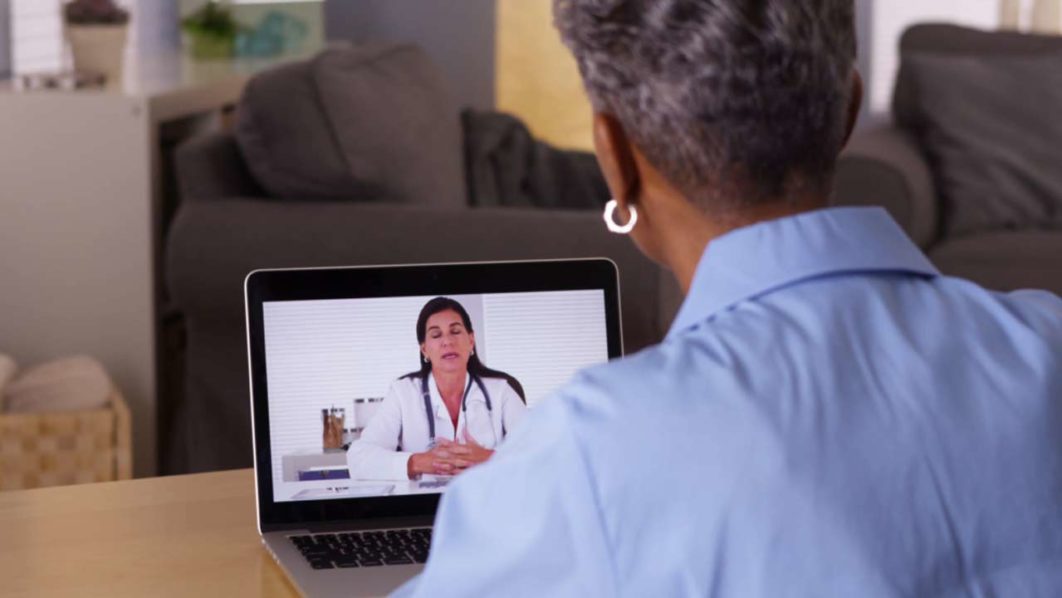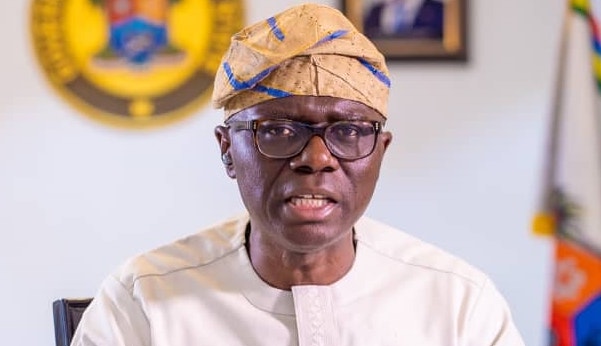
The use of technology to access better health care has gained patronage worldwide due to the highly infectious and deadly Coronavirus disease (COVID-19). As doctors limit in-office visits to prevent coronavirus spread, many have joined the telehealth or rather telemedicine movement.
Telehealth is the use of electronic information and telecommunications technologies to support long-distance clinical health care, patient and professional health-related education, public health and health administration. Technologies include videoconferencing, the Internet, store-and-forward imaging, streaming media, and terrestrial and wireless communications.
Telehealth is different from telemedicine because it refers to a broader scope of remote healthcare services than telemedicine. While telemedicine refers specifically to remote clinical services, telehealth can refer to remote non-clinical services, such as provider training, administrative meetings, and continuing medical education, in addition to clinical services.
Several studies have urged medical experts in Sub-Saharan Africa, within limits of applicability, to leverage on telemedicine in their clinical practice during this COVID-19 pandemic and beyond to manage patients.
Doctors say COVID-19, being a disease of second chance, has provided Nigerians with the opportunity to develop this technologically driven method of supportive care in the country.
Researchers from University of Abuja and University of Ibadan, said the risks of contracting COVID-19 with the regular “patient–doctor physical contact” method of management of cases in Otolaryngologic (ORL) practice are high, given the routine examination of nose and throat. They said the desirability of telemedicine in the handling of most patients is appealing despite the limitations in the technology, especially in the developing countries in Africa.
The study published last month in Nigerian Medical Journal is titled “Telemedicine in otorhinolaryngological practice during COVID-19 pandemic.”
Otorhinolaryngology is a specialty where instruments are frequently employed to visualise structures within the ears and upper aero-digestive tract. Occasionally, clinical diagnosis is confirmed based on the evaluation of live images, radiologic images, and audiologic data. This information can be transmitted through smartphones and computers with Internet connectivity to provide unique opportunities for remote review, diagnosis, and treatment, especially during the pandemic. Telemedicine has been employed to manage patients not in direct physical contact with a specialist or in situations where there is no specialist on site to manage diseases.
However, its use in otorhinolaryngologic practice is with limited experience. Otolaryngology is well positioned to take advantage of telemedicine (tele-otorhinolaryngology). These benefits are beyond coronavirus pandemic and may include increased health accessibility, avoidance of unnecessary visits to doctors in hospital, saving costs of transportation and unnecessary health expenditure, and efficient use of specialist resources. However, the diagnostic telemedicine is still largely in its development stage, with formidable handicaps in the areas of reimbursement, legislation, and malpractice issues yet to be overcome with exemption of teleradiology.
Telemedicine has a wide application with promising values in otorhinolaryngological practice, ranging from remote clinical consultation to disease management. With availability of smartphones, laptops, and improved Internet coverage, patients can now make remote audio-visual consultations with otorhinolaryngologists. When necessary, clinical photographs, radiological images, audiometric data, and laboratory results can be sent via Internets and fax to otorhinolaryngologist to help make informed diagnosis. Under suitable technical and clinical conditions, remote interactive fibre-optic nasopharyngolaryngoscopy and video-otoscopy can be used to evaluate a range of commonly occurring pathologies with a high degree of reliability. Medical treatment can then be prescribed, where surgical intervention is not needed, with desirable outcomes. Patients have reported satisfaction with remote medical treatment, especially with access and perceived quality of care.
According to the Proposed Internet-based healthcare system Infrastructure in Nigeria, published in International Journal of Information Management, an Internet-based telemedicine environment is developed for Nigeria, specifically to support consultations among remotely placed patients, rural health workers and specialists in the urban cities and provide a secure access to remote patient records.
MEANWHILE, a new telemedicine app, MyDokita has been launched on Google and Apple stores to provide Nigerians easy access to affordable medical practitioners overseas.
According to the founder Jide Akintola, it is important for Nigerians to embrace telemedicine, as it would give them access to fast and reliable medical care. “MyDokita app provides Nigerians affordable instant access to a second opinion on their diagnosis and medical prescriptions, thereby reducing the risk of misdiagnosis or wrong prescription. At the moment, there is no platform that allows collaboration and knowledge transfer between all the great Nigerian medical practitioners outside the country and those within the country. We have developed the MyDokita app to make this happen.
The platform allows for mentoring, knowledge transfers and collaboration between Nigerian overseas medical practitioners and the local experts through online video, audio and chat consultation.”
Created in partnership with Pius Akanni Akintola Foundation, Akintola pointed out that the app would address the medical brain drain in Nigeria as well as strengthen the healthcare delivery in the country.
Also, a Nigerian-based start-up, Mobihealth International has emerged one of the winners of the AfricaTech Healthcare Challenges 2020, organised by Sanofi biopharmaceutical in Paris, France.
Mobihealth won the challenge on “How to help healthcare systems leapfrog from manual to smart logistics solutions at point of care”.
Mobihealth is a Nigerian startup and telehealth platform, which uses telemedicine to provide people in developing countries with access to quality healthcare services through its fully integrated telehealth electronic medical records and video app.
Indeed, the onset of the COVID-19 pandemic has broadly affected how health care is provided worldwide. One notable change is the expanded use of telehealth services, which have been quickly adopted by many health care providers and payers, including Medicare, to ensure patients’ access to care while reducing their risk of exposure to the coronavirus.
In an article published in JAMA Oncology, Dr. Trevor Royce, an assistant professor of radiation oncology at the University of North Carolina Lineberger Comprehensive Cancer Center and UNC School of Medicine, United States (U.S.), said the routine use of telehealth for patients with cancer could have long-lasting and unforeseen effects on the provision and quality of care.
“The COVID-19 pandemic has resulted in the rapid deregulation of telehealth services. This was done in part by lifting geographical restrictions, broadening patient, health care professional, and services eligibility,” said Royce, the article’s corresponding author. “It is likely aspects of telehealth continue to be part of the health care delivery system, beyond the pandemic.”
Royce said the widespread shift to telehealth was made possible, in part, by three federal economic stimulus packages and the Centers for Medicare and Medicaid Services making several policy changes in March that expanded Medicare recipients’ access to telehealth services.
The policy changes included allowing telehealth services to be provided in a patient’s home. Medicare previously only paid for telehealth services in a facility in nonurban areas or areas with a health professional shortage. Medicare also approved payment for new patient appointments, expanded telehealth coverage to include 80 additional services, allowed for services to be carried out on a wider assortment of telecommunication systems — including remote video communications platforms, such as Zoom — and modified the restrictions of who can provide and supervise care.
While the potential benefits of telehealth have been demonstrated during the pandemic, Royce said they must be balanced with concerns about care quality and safety.
“There is a lot we don’t know about telehealth, and how its rapid adoption will impact our patients,” Royce said. “How will the safety and quality of care be impacted? How will we integrate essential components of the traditional doctor visit, including physical exam, lab work, scans and imaging? Will patients and doctors be more or less satisfied with their care? These are all potential downsides if we are not thoughtful with our adoption.”
He said appropriate oversight of care is critical. There will be a continued need for objective patient assessments, such as patient-reported outcomes, physical examinations and laboratory tests, and to measure care quality and monitor for fraud. There are also a number of standard measures of care quality that can be implemented during the transition to telehealth, including tracking emergency room visits, hospitalizations and adverse events.
Telehealth presents other challenges, as well. Though technology and Internet access are now more widely available, they are not universally accessible. Where one lives, their socioeconomic status and comfort level with technology can be barriers to using telehealth services. A reliance on telehealth might lower participation in clinical trials, which can require regular in-person appointments.
“Telehealth can be used to improve access to care in traditionally hard-to-reach populations. However, it is important to acknowledge that if we are not thoughtful in its adoption, the opposite could be true,” Royce said. “For example, will lower socioeconomic groups have the same level of access to an adequate Internet connection or cellular services that make a virtual video visit possible? Telehealth needs to be adopted with equity in mind.”
According to a report published in the journal Nature, beginning in March of this year, though, there have been a spike in the number of patients using telehealth services due to their doctors closing office doors to nonemergency needs. Once things began opening, patients still wanted to avoid waiting room exposure. It was also reported that more providers are joining telemedicine networks. From April 2019 to April 2020 telehealth usage in the United States increased by more than 8,000 percent, according to the nonprofit FAIR Health.
Tara Cavazos, a nurse practitioner, runs a Dallas clinic. Before the pandemic, her office was equipped for telehealth, but those visits made up only one or two appointments per week. By mid-March, though, Cavazos and her partners took nearly all appointments virtually. Her office was authorized to do COVID-19 testing, so it was important to limit in-office exposure for healthy patients.
“We quickly decided either you’re going to come through the back door and get COVID swabbed, or you’re going to be telehealth, and there’s no in-between,” Cavazos said.
But telehealth presents some challenges. Cavazos found that virtual visits have put an additional strain on her office’s front desk staff, who often must walk less tech-savvy patients through creating an account login for the online platform, ensuring they’re using a computer with a camera or a smartphone or tablet. She was relieved when the federal government announced in late March it would waive privacy law restrictions against providers using less secure technologies—like FaceTime or Google Hangouts—in patient consultations. The goal, stated Office of Civil Rights director Roger Severino, is to maintain medical care access for “older persons and persons with disabilities.”
Cavazos said her older patients are often accustomed to talking to their grandkids over FaceTime already, so that option made adding new telehealth patients less of a burden on her staff.
Some providers worry the growth in telehealth will widen the chasm between underserved patients and quality care. Cavazos agrees: “We didn’t go into healthcare to be behind a computer. Healthcare requires a holistic approach: seeing, touching, talking to a patient.”
Her practice currently tries to sustain its providers by rotating who is on telehealth duty and using a standing desk. Even on days that feel monotonous, Cavazos said most providers endure, knowing they’re providing a valuable service to patients.






